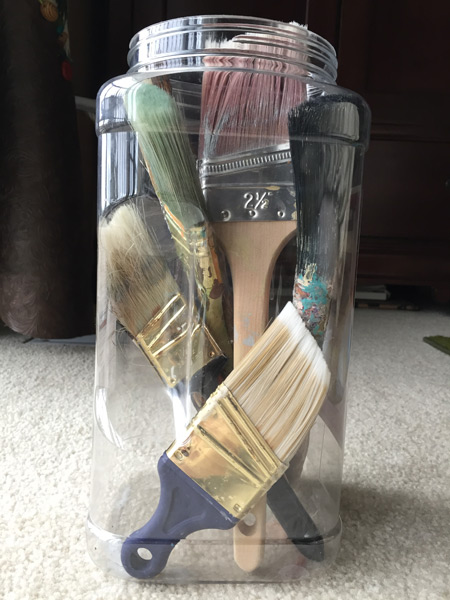 When considering painting a room or a wall in your home, usually thoughts of color choice is the conversation at hand. What many people don’t consider is the brush that is used for this paint project of yours. Achieving excellent results in a painting project depends largely on the applicator you use.
When considering painting a room or a wall in your home, usually thoughts of color choice is the conversation at hand. What many people don’t consider is the brush that is used for this paint project of yours. Achieving excellent results in a painting project depends largely on the applicator you use.
What to Buy: Straight edged brushes are used for surface coverage, and angled edges are used for cutting into corners and edging. Look for bristles that are tapered or chiseled at the ends to create a smoother finish. Split bristles hold more paint, which allows a more precise edge. Generally speaking, for sizing we recommend the rule of 1, 2, 3.
- The 1” brush is good for getting corners, window sashes, edging and handling tight spaces.
- The 2” brush is great for molding and woodwork.
- The 3” brush is ideal for large flat surfaces, cabinets, beams, fences, stairs etc.
Although there are 4” brushes, most of us use a roller for really large surfaces like ceilings and walls, so generally speaking you can stick with the rule of 1, 2, 3. The two main bristle types are natural and synthetic. Synthetic brushes are made out of nylon and/or polyester and can be used with water-based & oil-based paints. Brushes with natural bristles made from animal hair are preferred for oil-based paints but should never be used with water-based paints as they absorb the water and become limp. While price is often a good indication of quality, it never hurts to know what to look for in a good brush. Purdy makes some of the best brushes, easily available at Long Bros in aisle 35.
Keeping your brush nice: Brushes can be stored overnight, or for a few hours, mid-project, by placing them in a ziplock sandwich baggy and zipping it closed up to the handle so as little air gets in the bag as possible.
After using your brush, clean it in warm, soapy water (for water-based paints) or solvent (for oil-based paints) until the water or solvent runs clear. Don’t leave your brush soaking or the bristles could bend. I personally have a big container (an old pretzel bin that I love) which holds my brushes upright so they dry naturally and don’t get bent. If taken care of and stored correctly, a quality brush will last for years, and can be used for many projects.
Paint hack: Painting a door? Use aluminum foil for wrapping doorknobs to keep paint off. Overlap the foil onto the door when you wrap the knob, then run a sharp utility knife around the base of the knob to trim the foil. This allows you to paint right up to the edge of the knob.
Next month we will discuss rollers for painting so stay tuned! As always, the Long family would like to Thank You for your continued business and support. If you enjoyed this blog post, we would appreciate your comments and shares in social media. We look forward to seeing you for all of your painting needs. Also look for DIY ideas sprinkled throughout 2015!

